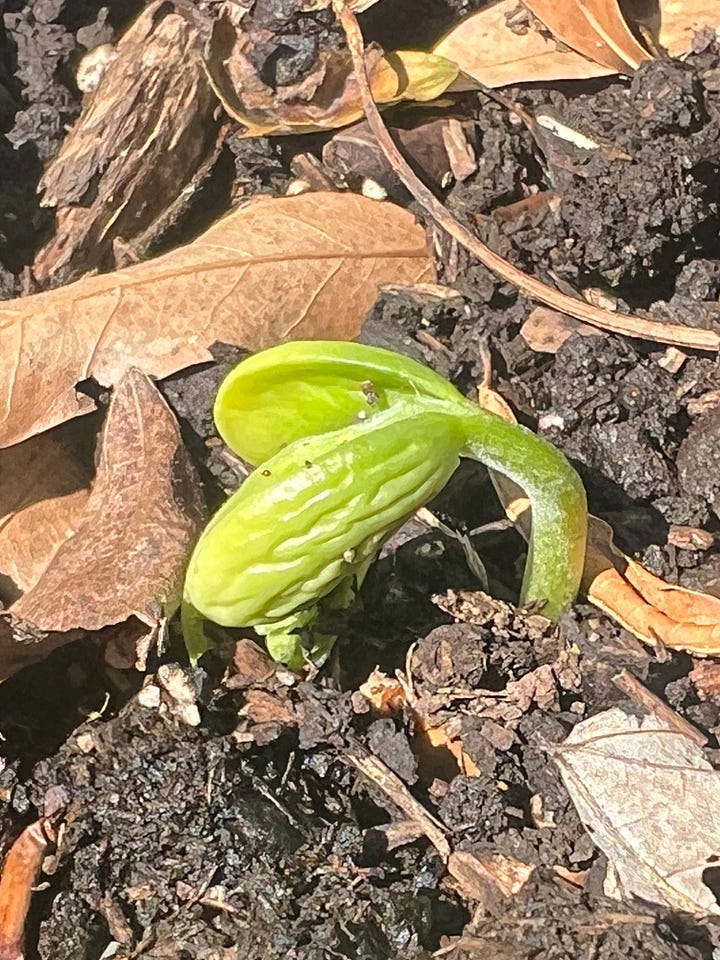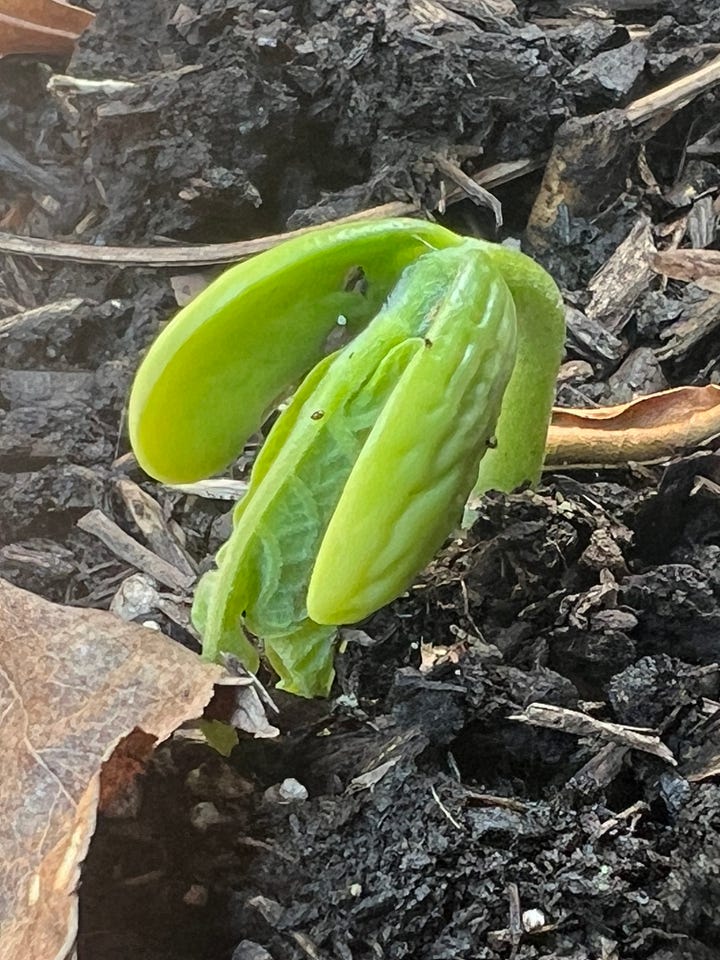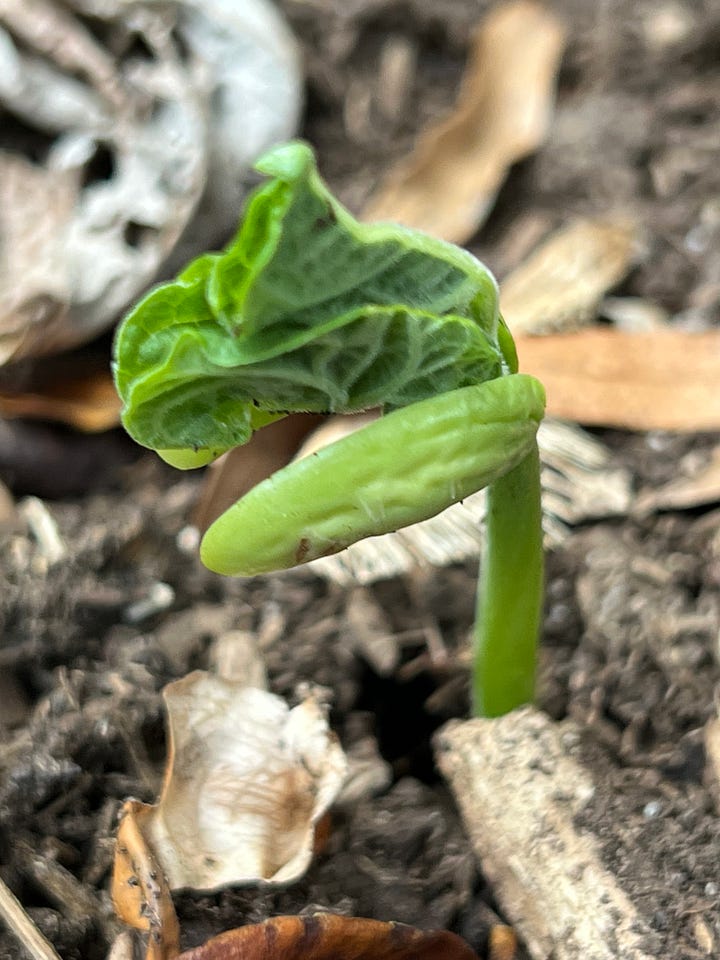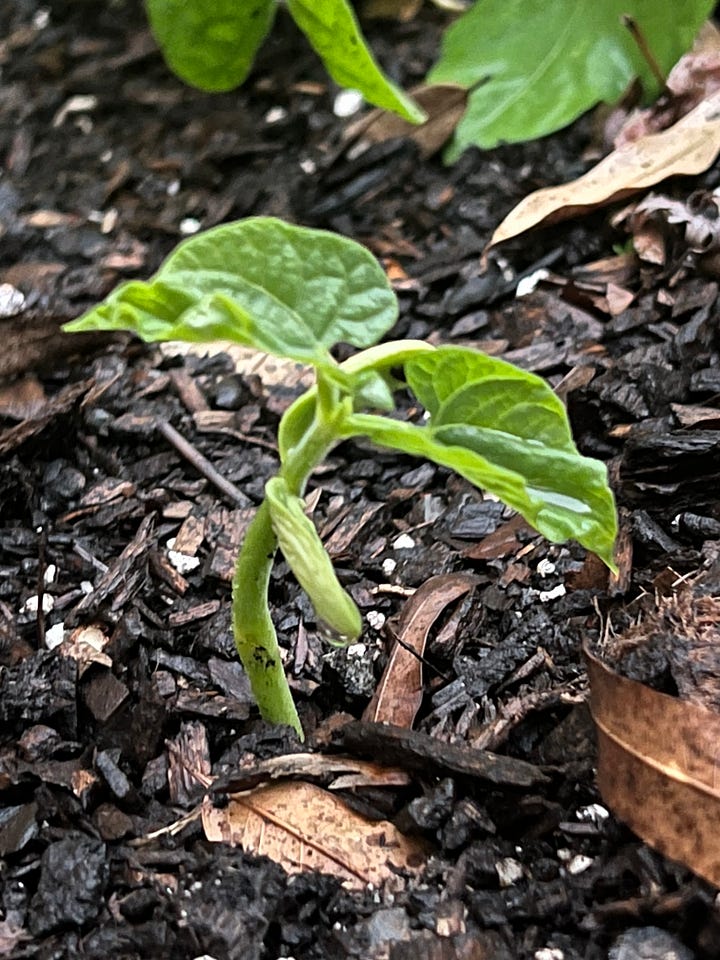May was particularly cool and rainy here and while the temperatures are warming, June has continued to bring rain. When I walk outside, I am met by dampness and by so much green. In the forest behind our house the greens seem to multiply daily.
In the garden, new shoots of bean seeds emerge from the soil and unfurl the first baby leaves, reaching toward the light. Clumps of squash plants emerge where I spread last year’s compost.




In our flower bed, the lavender is blooming, the bees are visiting, and the daylillies are full of buds and flowers. I have been planting sunflower seeds, trying to stay ahead of our resident chipmunk who seems to think I am hiding snacks. I am hopeful a few will sprout and bloom later this summer.
As I observe all this growth, I feel a connection to the earth and to humans of past centuries who have observed and nurtured the life cycles of plants.
I am also reminded that the root of the word culture is tied to care, tending of land, and agriculture. Culture is a medium in which to grow.
Culture is also a way we describe who we are and the kind of society and communtiy we are part of.
Lately, it feels like there is a lot of conflict, fear, anger, and uncertainty in our dominant culture. At the same time, I see things like creative practice, slowness, cultivation, and making things by hand described as countercultural. Sometimes it seems anything that is not about maximizing power, control, and profit is labeled countercultural.
I am aware that many of my interests and activities relate to things deemed countercultural. This has never really bothered me. At the same time, I have been thinking about the suggested meaning of the word from a more metaphorical standpoint. If something is countercultural, it sounds like it is against culture.
And yet as I think about things like cultivation, care, making by hand, and creative practices, I see these things as connected to human culture from the beginning of time. While these things may seem outside and opposite of dominant culture, I do not think they mean to be in opposition.
I see these creative acts as connecting us back to practices and people throughout history who created, cultivated, shared and made things together. They are like threads connecting us to things that have always and continue to nurture growth. These same threads connect us to each other.
This culture of care and making may not be dominant but it is long lasting, persisting in new ways in each generation.
Just as my bean plants and squash seedlings connect me to plants nurtured and seeds saved from last year’s garden, my creativity connects me to a whole history of human creators.
I would love to hear from you too. Where do you see connections and culture in your life? This might be in recipes passed down through the family, tools that belonged to parents or grandparents, or a sharing of creative practice with children.
How would you describe the culture that supports your creative growth?
Where do you find this or how do you create it?
Is there anything you need to better cultivate the space for this growth?
I love discovering growth in our yard and garden, both that we cultivate and that which surprises. I have discovered two different kinds of flowering grass recently along the edges of our backyard.
Here is a poem about one of them:


Thank you for being a part of creative community through this newsletter.
With a grateful heart,
Kathryn
P.S.
Two newsletters on Substack influenced my thinking about culture for this piece and are worth checking out.
wrote about describing her family’s culture in What is the Culture of your Family? This post has been on my mind since first reading it six months ago. I am reminded how describing our culture is personal, specific, and reflects our values. It is not an external label but an opportunity to describe what feels important in our lives and relationships., Stacy Vajta wrote about The Radical Roots of Crafting: Why Our Hands Have Always Been Political. I am reminded how creating with our hands can be an act of resistance, a way of finding our voices and making meaning, and a powerful source of connection.In my May 14 newsletter I shared some of the modular origami I made while writing. In looking for a link to offer instructions, I found there was a third, larger shape I could assemble from the same repeated folding shape. In May I shared the cube and octahedron. This month I tried the icosahedron, made with 30 pieces of paper!






Your words are a powerful reminder of the origin of culture - the current climate is actually counter to our inherent culture and maybe that is more because of the news cycle. I like to think that there is more creativity and kindness in the world than we hear of and your newsletter is an inspiration and a reminder of the importance of slowing down and being present to all of the natural beauty and goodness in the world. I enjoy birding, photography, flowers, walking, and reflecting on the wonders of our earthly home.
Your words hit home. We need to be connected to what nurtures our relationships and our souls, especially in times when it seems there is so much division and conflict. I look forward to planting and tending, mending and creating, and spending time with children as they explore their own creativity. This care seems to ignite my own creativity and even though I am not sure if the kids will remember this time of making together, it means the world to me to plant that seed with them. I see so many young people who are longing for slowness, nurturing, caring, and creativity. The world is way too loud right now and if our culture is defined by power and control, I want to be as countercultural as possible.